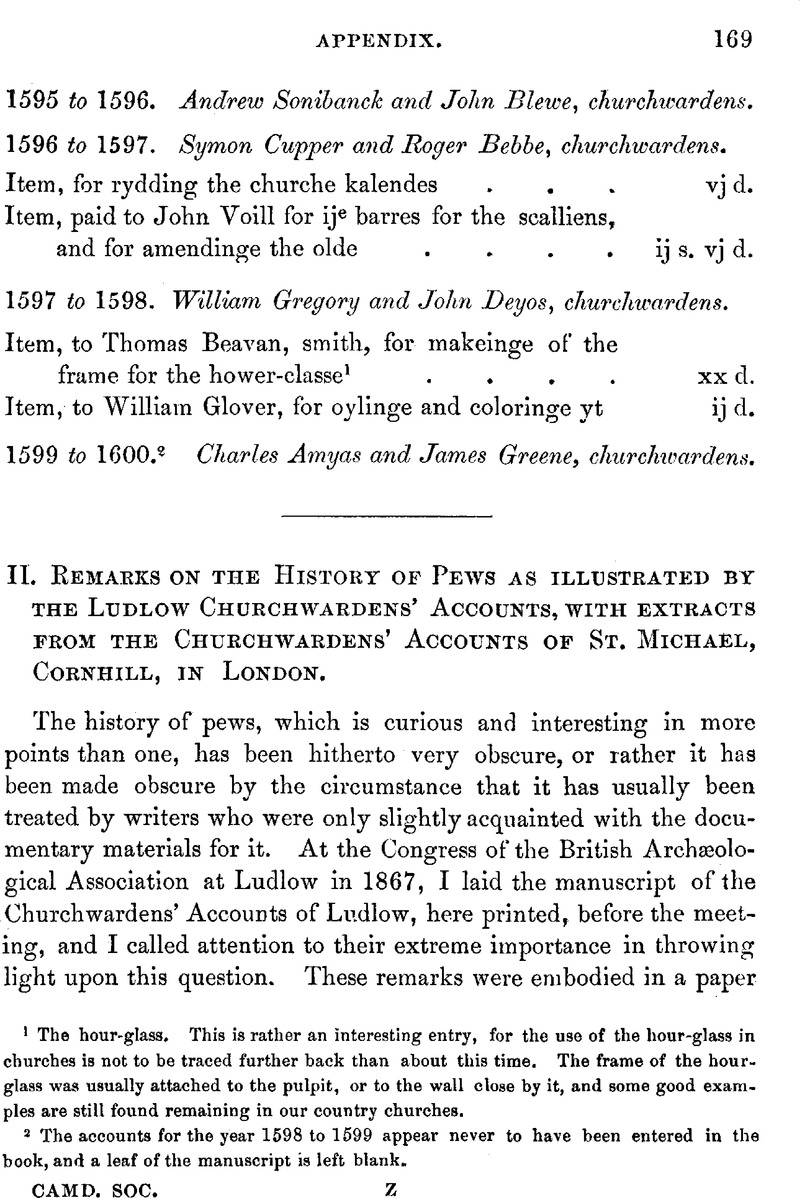No CrossRef data available.
Article contents
II. Remarks on the History of Pews as Illustrated by the Ludlow Churchwardens‘ Accounts, with Extracts from the Churchwardens’ Accounts of St. Michael, Cornhill, in London
Published online by Cambridge University Press: 24 December 2009
Abstract

- Type
- Appendix
- Information
- Copyright
- Copyright © Royal Historical Society 1870
References
page 169 note 1 The hour-glass. This is rather an interesting entry, for the use of the hour-glass in churches is not to be traced further back than about this time. The frame of the hour. glass was usually attached to the pulpit, or to the wall close by it, and some good exam, ples are still found remaining in our country churches.
page 169 note 2 The accounts for the year 1598 to 1599 appear never to have been entered in the book, and a leaf of the manuscript is left blank.
page 170 note 1 The MS. Cotton. Vespas. B. xvi. which gives the same text as Whitaker, reads sitte and pues: sute is, of course, only another form of sitte, if it be not a mere error of Whitaker's, who was very incorrect in whatever he did.
page 173 note 1 There can be no doubt that the use of pews in churches was quite common during the fifteenth century. Just as I am correcting this sheet for the press, I open the “Testamenta Vetusta,” and find, at p. 266, a will of William Bruges, the first Garter King of Arms, dated at London, Feb. 26, 1449, by which he leaves, among other things to the church of Stanford, money to complete the fabric,— “that is to be understand, in coveryng with lede, glassyng, and makyng of pleyne desques, and of a pleyn rodelofte, and in puyng of the seyd. chirch, nourt curiously, but pleynly, and in pavyng the hole chirch.” &c. Again, at p. 289 of the same volume, we have the will of John Younge, of Herne, dated May 26, 1458, who also left money “to the fabrick of the church of Herne, viz. to make seats called puinge, x. marks, so that the same be done within two years after my decease.”
page 175 note 1 The three entries beginning with this come together. It may be remarked that garnetts, in old English, meant hinges.




